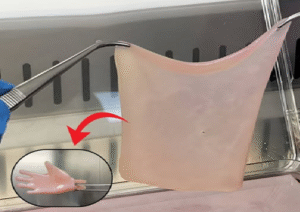CARTOSAT-3, India’s most advanced and highest-resolution civilian imaging satellite, was successfully launched into space by ISRO on 27 November 2019. The satellite was carried aboard the PSLV-C47 (Polar Satellite Launch Vehicle) from the Satish Dhawan Space Centre, SHAR, Sriharikota, Andhra Pradesh. Along with CARTOSAT-3, 13 nano-satellites from the USA were also deployed as secondary payloads.
Launch Date: 27 November 2019
Launch Vehicle: PSLV-C47
Launch Site: Satish Dhawan Space Centre, Sriharikota
Weight: 1,625 kg
Mission Type: Earth Observation & Mapping
Mission Life: 5 Years
Orbit: Sun-Synchronous Polar Orbit (SSO) at 509 km altitude
Resolution: 0.25 meters (25 cm) – Highest for an Indian satellite
CARTOSAT-3 is a third-generation agile satellite with advanced imaging capabilities. It is significantly more powerful than its predecessors in the CARTOSAT series, offering ultra-high-resolution imagery for various applications.
1. Unmatched Imaging Capabilities
Panchromatic Camera: 0.25 m resolution (25 cm per pixel), which is the highest-resolution civilian satellite ever built by ISRO.
Multispectral Imaging: Captures high-quality images in visible, near-infrared (NIR), and shortwave infrared (SWIR) bands.
Hyperspectral Imaging: Provides detailed spectral analysis for land and water monitoring.
2. Advanced Mapping & Surveillance Features
3D Terrain Mapping: Capable of generating highly accurate digital elevation models (DEMs) for topographical studies.
Urban & Rural Planning: Helps in smart city planning, resource management, and disaster preparedness.
Border Surveillance & Strategic Applications: Supports defense and security agencies with detailed reconnaissance imagery.
Agricultural & Environmental Monitoring: Used for crop assessment, forestry studies, and climate change analysis.
3. Improved Maneuverability & Agility
Highly Agile Platform: Can quickly change its orientation to capture images at different angles.
Onboard Data Processing: Advanced AI-based algorithms for faster image processing and analysis.
Better Data Transfer Capabilities: Enhanced satellite-to-ground station communication for real-time data relay.
Primary Payload: CARTOSAT-3
Secondary Payloads: 13 Nano-Satellites from the USA
These small satellites were launched under a commercial agreement between ISRO’s NewSpace India Limited (NSIL) and US-based customers.
Orbit Insertion: The satellite was placed into a sun-synchronous orbit (509 km altitude) approximately 17 minutes after launch.
Comparison with Previous CARTOSAT Missions
Highest Civilian-Grade Imaging Satellite: Offers military-grade imaging capabilities for civilian and defense applications.
Supports ISRO’s Remote Sensing Programs: Strengthens environmental monitoring, disaster response, and urban planning.
Boost to Strategic Defense Capabilities: Assists border surveillance and national security agencies.
Promotes Commercial Space Missions: Opens new opportunities for global partnerships and satellite-based services.
CARTOSAT-3 is a game-changer in Earth observation technology, bringing unprecedented imaging precision to India’s space capabilities. With its 0.25-meter resolution, agile maneuverability, and advanced imaging sensors, it marks a significant leap in remote sensing applications, making India a leader in high-resolution space imaging.







